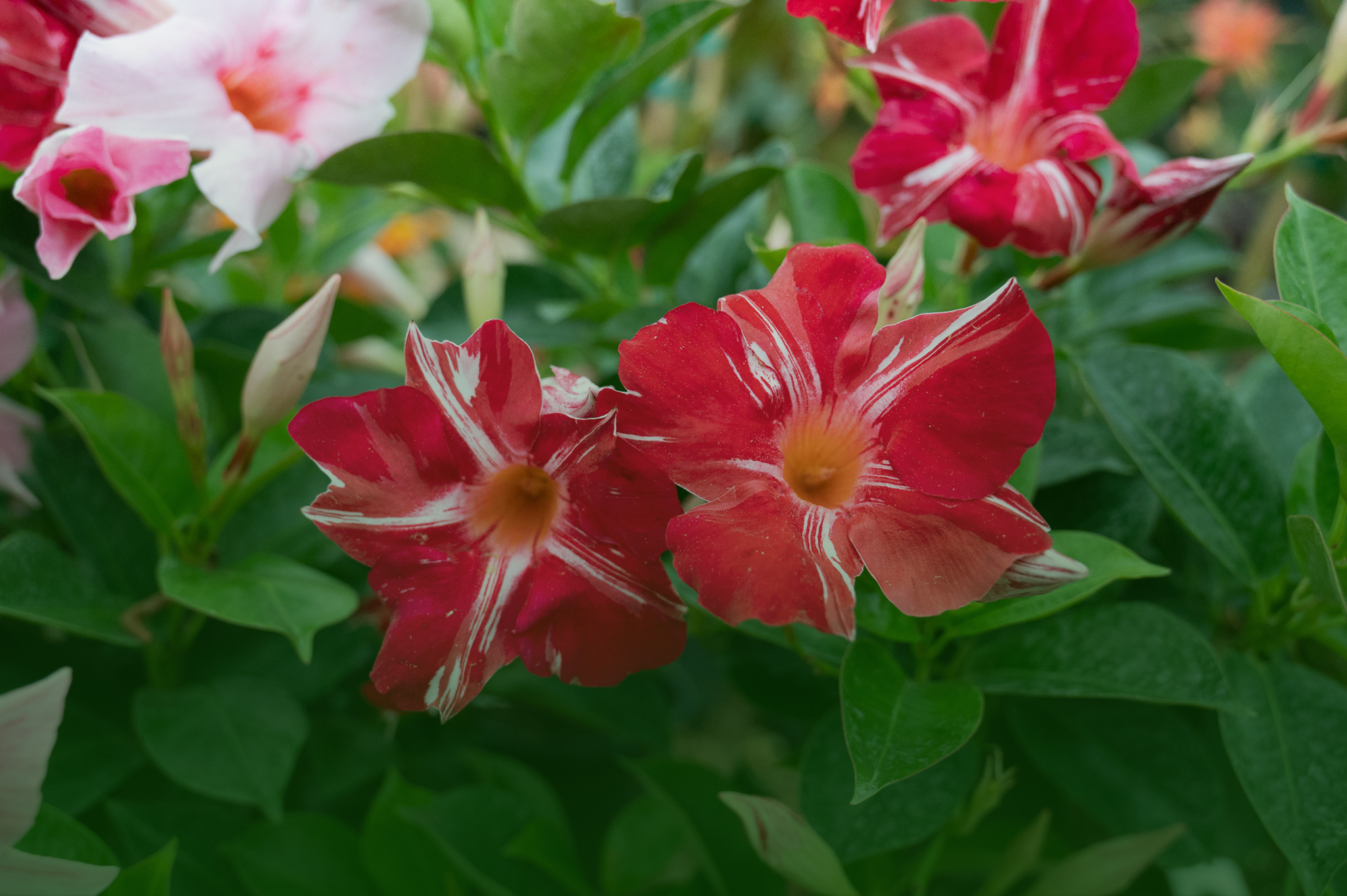
May & June Gardening
We continue into the season where many of you are making both changes and additions to landscapes and gardens. As you proceed, take time to research the plants you’re considering. One of the more common gardener mistakes is forgetting that plants grow – often much larger than we anticipate. The consequence is that years later, we end up with an overgrown jungle that may block the view from an inside window or hides too much of a home’s exterior.
When shopping for plants, always consider the projected size of a plant at maturity. Nursery signs provide that information and you can augment your data with individual research. In most cases you don’t want to use plants in front of windows that require a lot of pruning. Fortunately, growers have released more shrubs in recent years that tend to be slower and lower growing.
For example, in a recent walk through the nursery, I noted several attractive shrubs that were projected to grow no taller than about 3-4 feet:
‘• Touch of Gold’ holly,
• ‘Cerise Charm’ loropetalum,
• ‘Florida Sunshine’
• Ocala anise
• Distylium ‘Cinnamon Girl’
• Distylium ‘Cinnamon Swing Low’
• Spreading or prostrate Japanese plum yew
• Cephalotaxus harringtonia ‘Prostrata’
Remember, foundation plants don’t have to be woody shrubs. Plants such as giant liriope, Lomandra, Dianella (flax lily), Crinum, and Agapanthus (Lily of the Nile) work well too.
Planting & Watering
As you plant your new plants, be sure to dig the planting holes 2-3 times wider than the root ball. Don’t plant any deeper than the plant was growing in the pot. You don’t need to fertilize the plants until they’ve been growing for a while. But you will need to water them. Focus on the root balls, at least every other day when it’s not raining. The only sure way to tell if a plant is receiving enough water is to check it by hand. Stick your finger down an inch or so into the soil of the root ball and see if it’s moist. Periodically do this check – especially if you’re relying on a sprinkler system – because you may find that the roots really aren’t receiving enough water. Maintaining a 2-3 inch layer of pine straw mulch around the plants will help conserve moisture, protect the roots from the excessive summer heat, and keep weeds from sprouting so easily.
Choosing Color & Heat-Loving Plants
We’re rapidly approaching summer. As you plant for color now, look for plants that thrive in summer heat. Some smaller, more compact colorful plants for sunny areas include torenia, Sunpatiens, Melampodium, vinca, narrow-leaf zinnia, coleus, croton, lantana, and pentas. If you have plenty of room in sunny areas for larger perennials, firebush, firecracker plant, and Turk’s cap and shrimp plant are excellent choices for attracting hummingbirds. Plumbago produce masses of blue flowers. ‘Sunshine’ ligustrums and the burgundy-leafed, lower-growing loropetalums such as ‘ Purple Diamond’, ‘Crimson Fire’, and the aforementioned ‘Cerise Charm’ are colorful shrubs for sunny areas.
For moderately shaded areas, variegated shell ginger, caladiums, and coleus add a lot of color with their foliage. Hydrangeas will be flowering soon and are good options for areas of afternoon shade.
Crepe myrtle flowering season is just around the corner. If you’re selecting new ones to plant, consider the mature height and spread of the plant and select a variety that won’t outgrow the site. You shouldn’t have to prune a crape myrtle to keep it at the desired height. There are shrub-sized and patio-sized crape myrtles if that’s what you need.
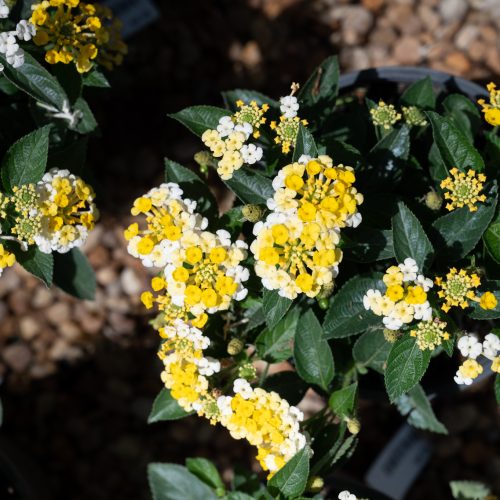
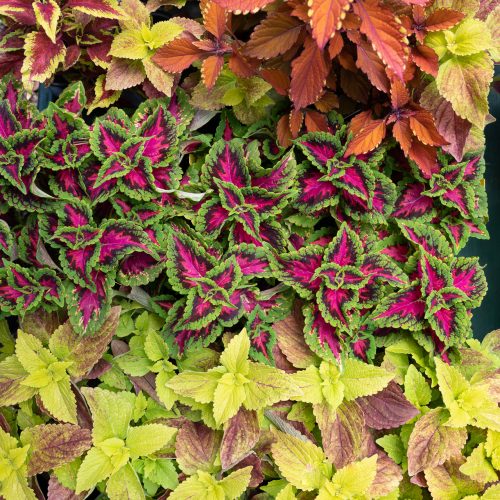
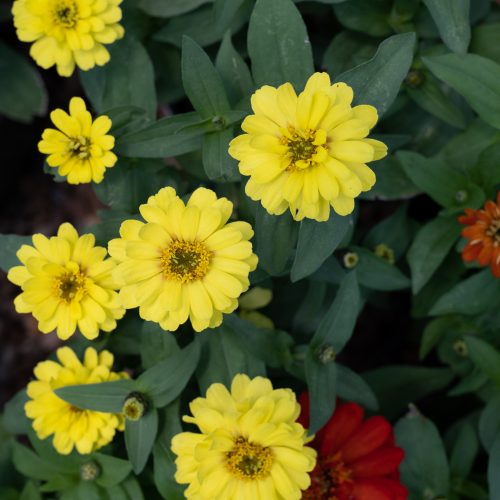
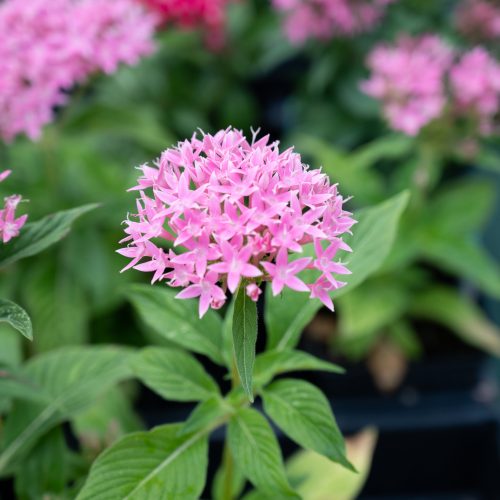
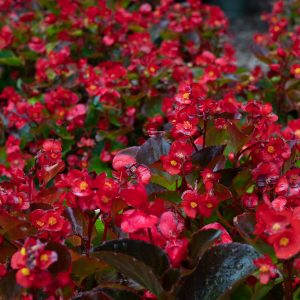
Pruning
Often, we can deal with overgrown plants through judicious pruning. But if the mature size of the plant is much larger than the planting location, it’s a losing battle. In those situations, it’s best to remove the plant and replace it with a more suitable plant selection. This is a good time of year for that type of makeover. The nursery is well stocked and most of the growing season is ahead. You may have pruned your older landscape plants earlier in the spring. If needed, continue light pruning into the summer to reduce size, increase compactness, or to generally shape plants as desired.
Lawn Care
Mow your lawn regularly and take time to periodically remove and sharpen mower blades. It’s best to have your own sharpener so you can do this often. But if you don’t, there are equipment and repair shops that can do the sharpening for you. A dull blade makes a ragged cut. Don’t forget to perform other maintenance service on your mower such as changing oil, changing air filters and greasing fittings. As you mow, be cautious not to mow too low. That places additional stress on the grass – particularly in areas where the grass may already be under stress, such as in shaded areas or areas of high traffic. If you do have problem areas in the lawn, this is an excellent time to buy grass plugs or pieces of sod to fill in areas of the lawn. If it’s an area that you continually replant, be realistic about whether there’s really enough sunlight for grass to grow well.
Fertilizing
This spring has been somewhat cool, so if you’re like me and still haven’t fertilized the lawn yet, take the time to do it now. A good general-purpose fertilizer for our area is 15-0-15 or similar no-phosphorus fertilizer which has half of its nitrogen in a slow-release form. This same fertilizer can also be used as needed on other plants that do not require additional phosphorus. Of course, if you choose to use a combination fertilizer/weed-killer on the lawn, don’t use it around other plants. The herbicide will damage plants.
Fruit, Herbs & Veggies
This time of year is an excellent time to add and feed various fruits and vegetables.
• This is the best time to plant citrus, so that it has a long growing season to establish before next winter. Fertilize them every four to six weeks with Citrus-Tone, which contains micronutrients especially for citrus.
• Blueberries, figs, and blackberries ripen in late spring to summer and can be planted now.
• Fertilize vegetable plants that you planted in March or April. You can still plant heat-tolerant vegetables such as okra, eggplant, peppers, beans, southern peas, and sweet potatoes.
• Plant and fertilize herbs such as basil, fennel, and rosemary.
Ant Prevention
Broadcasting fire ant bait now (such as Amdro) can provide substantial prevention of new fire ant mounds in your yard until the fall. Be sure to follow label directions carefully. The rate applied is very low and you don’t want to needlessly apply more than needed. You will need a small, inexpensive hand spreader, not a lawn fertilizer spreader, to apply the low volume of bait required.
Anything that you plant now will need regular watering. That’s what they’ve been getting here at the nursery. Remember that for several months, at least. All the roots will still be in the root ball that was in the pot, even after you put the plant in the ground. Soak this root ball at least every other day. Don’t rely on a sprinkler system that only comes on once or twice a week. That’s not enough water for the limited root systems of new plants.
*This article was written by David W. Marshall, University of Florida Extension Agent Emeritus and Landscape Consultant with Tallahassee Nurseries

